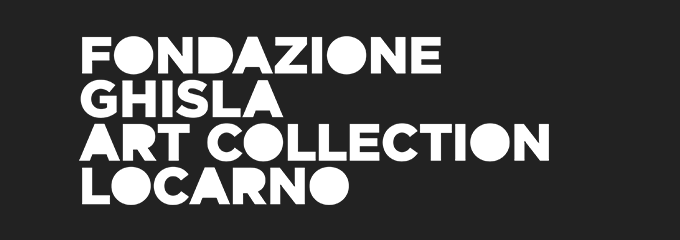Carlo Ciussi
March 20th 2022 – August 21st 2022
Carlo Ciussi (Udine, 1930 – 2012) is one of the leading figures on the twentieth-century Italian art scene: his work runs through the whole of the second half of the last century to the beginning of the new millennium, and has maintained its basic coherence despite the wide range of outcomes in different periods of his unceasing artistic practice. The exhibition offers the opportunity for an overall reading of the artist’s work, making it possible to retrace its history.
The exhibition’s layout is chronologically organised, offering an overall vision of the various periods in his way of making art since 1965, after his first appearance at the Venice Biennale in 1964, right up to 2012.
The twenty-seven works exhibited are representative of the essential turning points in Ciussi’s history, from the first, where the focus is on the geometric layout of the square in tones of grey and black, amongst which III.65 (1965), part of the Fondazione Ghisla collection, later filled with colours and then developing over several decades, right up to his last works.
Some of the paintings were exhibited in the initial Milan exhibitions at the Galleria Stendhal in the ’60s; others, such as XLI (1967), at the important exhibition dedicated to Ciussi by the Paul Facchetti Gallery in Paris in 1967 (and then in its Zürich gallery in 1971) or again, in 1967, at the IX Bienal in São Paulo, Brazil (XXIII, 1967), later to be presented together in 1974 on the occasion of his first retrospective at Palazzo Torriani, Gradisca d’Isonzo.
After a twenty-year period in which Ciussi seemed to focus mainly on geometry, in the ’70s it was colour that took on a central role in his work, with a simplification of the geometry in fluctuating rectangular figures, such as the works XXIV (1976) and XXX (1979); but this shift reveals how decisive colour was for the artist in his previous research. In the ’80s and ’90s the dynamic energy of a serpentine pictorial mark arises, as can be observed in the paintings exhibited in 1990, or an angular one, from 1995, which spreads out to the surrounding area in works like Struttura (1995), a free-standing, three-dimensional work. After taking part in the Venice Biennale in 1986 with two sculptures, an important synthesis comes with the anthological exhibition at the Museo Revoltella in Trieste in 1997 and, in 1998, the personal show at the Esslinger Kunstverein, Villa Merkel in Esslingen, Germany.
In the new millennium Ciussi’s work starts out again – though in a radically new form, driven by all the years devoted to the study of colour and the analysis of pictorial instruments – the off-centre squares that appeared in the 1965 paintings, as in Senza titolo of 2005, which also belongs to the Fondazione Ghisla collection.
At the start of the 2000s big anthological and retrospective exhibitions followed one upon the other, both in Italy and abroad. Important exhibitions are held in 2005 at the Palazzo Isimbardi in Milan, at the historical Palazzo dei Sette in Orvieto in 2007 and, in 2009, in Germany, at the Neuer Kunstverein in Aschaffenburg, and in Austria, at the Stadtgalerien in Klagenfurt. In the same year Ciussi was invited to show his works at the exhibition Temi & Variazioni at Venice’s Peggy Guggenheim Collection, while previously he had already exhibited a large sculpture in Piazza della Scala, Milan, in 2005.
Lastly, his research extended to a study on filling the squares themselves, in the “Senza titolo” series of 2009, or scratching the surface of the painting in the latest works in 2011 and 2012, presented for the first time at the anthological exhibition at the Museo d’Arte Moderna e Contemporanea at Casa Cavazzini, in Udine.


